In Windows 10, you can search for files and other content using the search tool integrated in the taskbar. However, you can also search for files directly through the file explorer. With the November 2019 update of Windows 10, Microsoft has integrated the search for Windows in the file explorer. This means that you can click or write a keyword in the search field and the file explorer will suggest files according to your search term. But even without this last improvement, the search explorer search implies more than it seems. Let's see how to use the search explorer search tool.
See: 20 professional tips for Windows 10 to work as you want (free PDF)
First, to take advantage of the Windows search in the file explorer, be sure to have updated to version 1909 of the November 2019 update of Windows 10. Open the file explorer in a specific folder in which you want to search . Click the search field. If functionality works, you should see a list of previous searches elements. Write one or two characters and the previous searches elements will coincide with your criteria.
Press in to see all the search results in the window. Click on the right search result to open the corresponding document or other file.
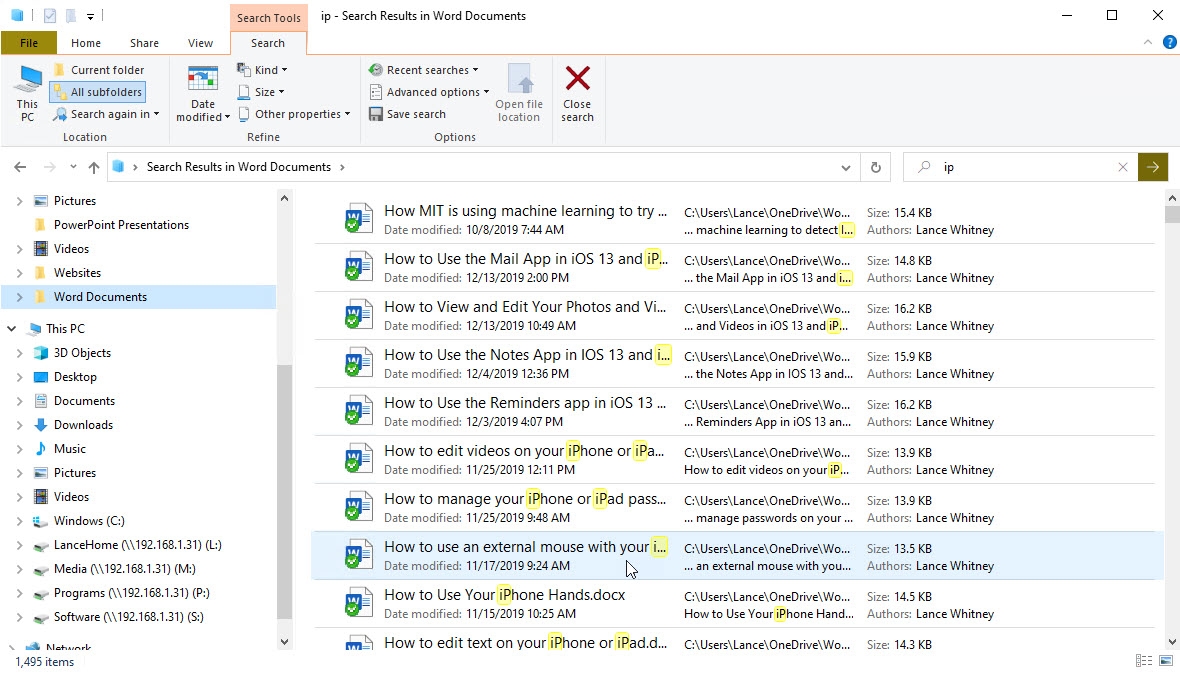
With the search explorer search tape, you can use different commands, options and criteria to refine your searches. To expand the location of the search to your entire computer, click on the icon of this PC. To limit the location only to the current folder and without subfolders, click on the current folder icon. To include the current folder and all subfolders, click on the icon of all subfolders. To search other places, click on the icon to search again and choose a different folder.
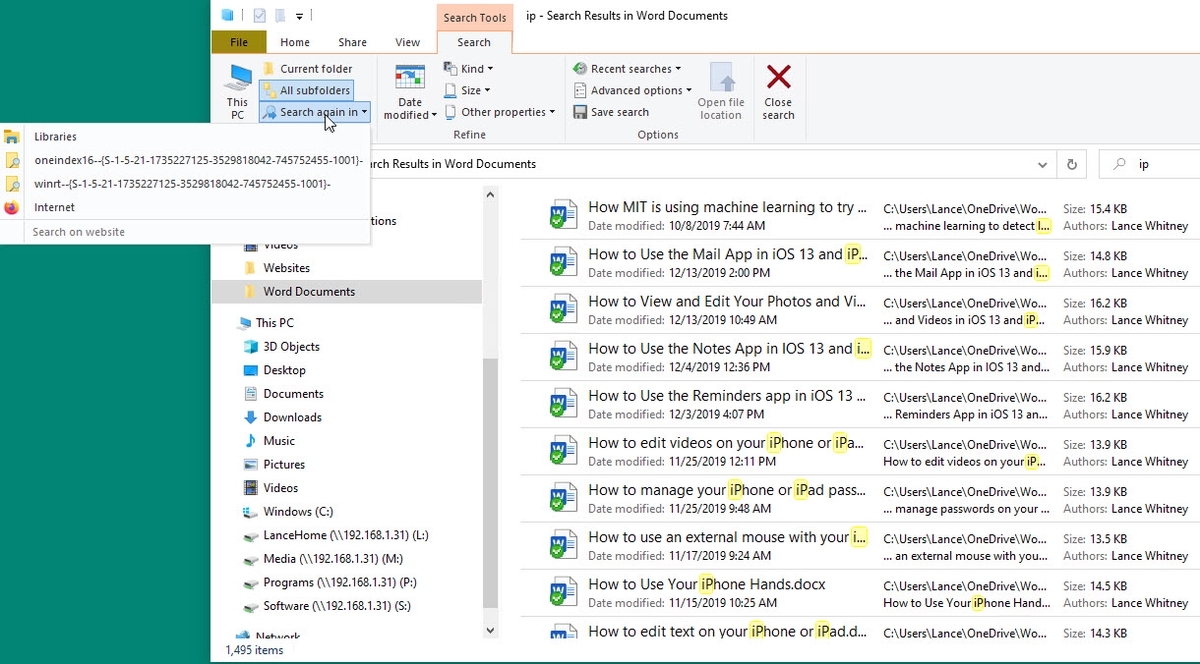
To search for date, click on the modification date icon and select today, yesterday, this week or other period of time. Click on the type icon and you can specify the type of file you are looking for, such as a document, image, video or program. Click on the size icon to limit the search to specific file sizes, such as small (16 kB to 1 MB), medium (1 MB to 128 MB) or large (from 128 MB to 1 GB).
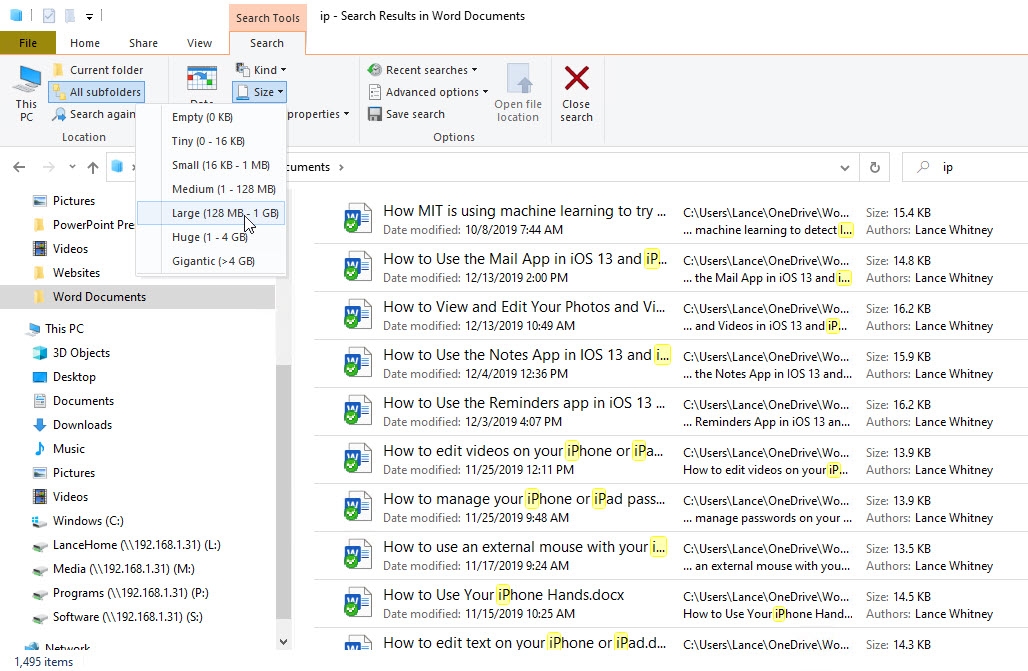
How to look for files in Windows 10
Click on the icon of other properties. Then click one of the Menu options: Type, Name, Folder Route or Tags. In the search field after the name of the property and the two points, you can write a specific value.
If you choose name, you can write a specific file name or a keyword of the file name. If you select type, you can enter Document or image as the specific type. If you select the folder route, you can enter a specific route name. You can also add several properties to a single search. If you want to see only folders, you should use the search bar and include search filters such as Type: Folder.
If you want the results of your search to be a specific file type, you must add its extension to the search with an asterisk, such as *.png, *.docx or *.pdf.
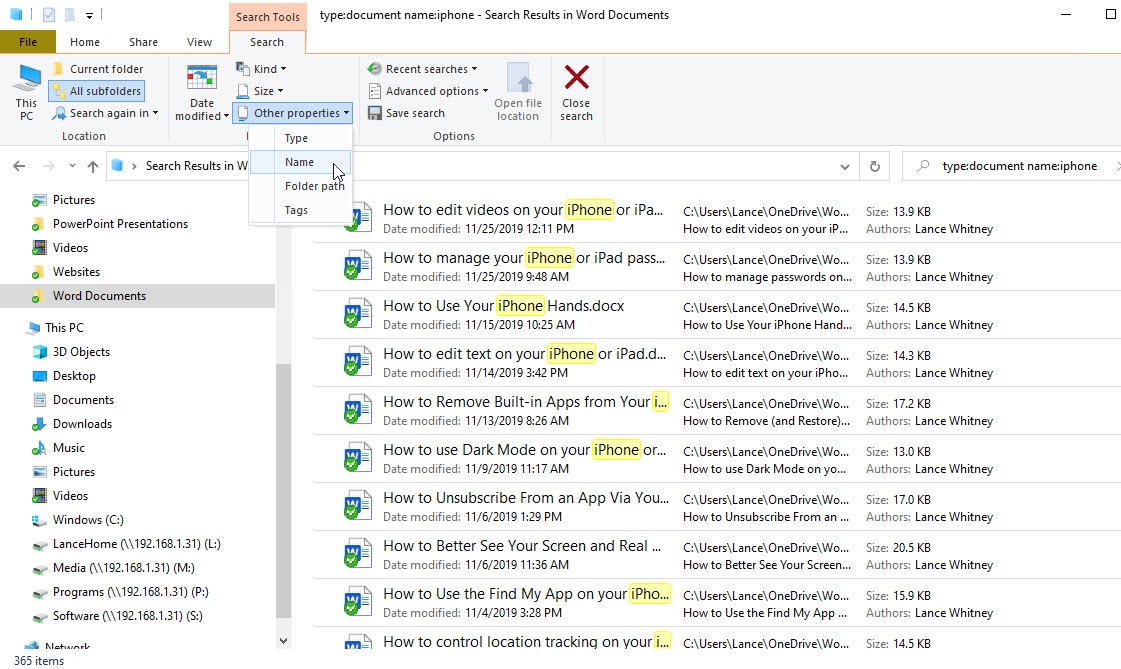
How to access past searches
To access previous searches, click on the recent searches icon and select the search you want to run again. Next, Windows Indexa and looks in certain locations to accelerate your searches, but you can change that. Click the Advanced Options icon. Click the option to change indexed locations.
From the Indexation Options window, you can add or eliminate locations in the index. Click Close when it's over. Return to advanced options. Select or cancel the selection of any of the three non -indexed locations that you want to include or exclude in your search, specifically file content, system files or compressed folders (compressed).
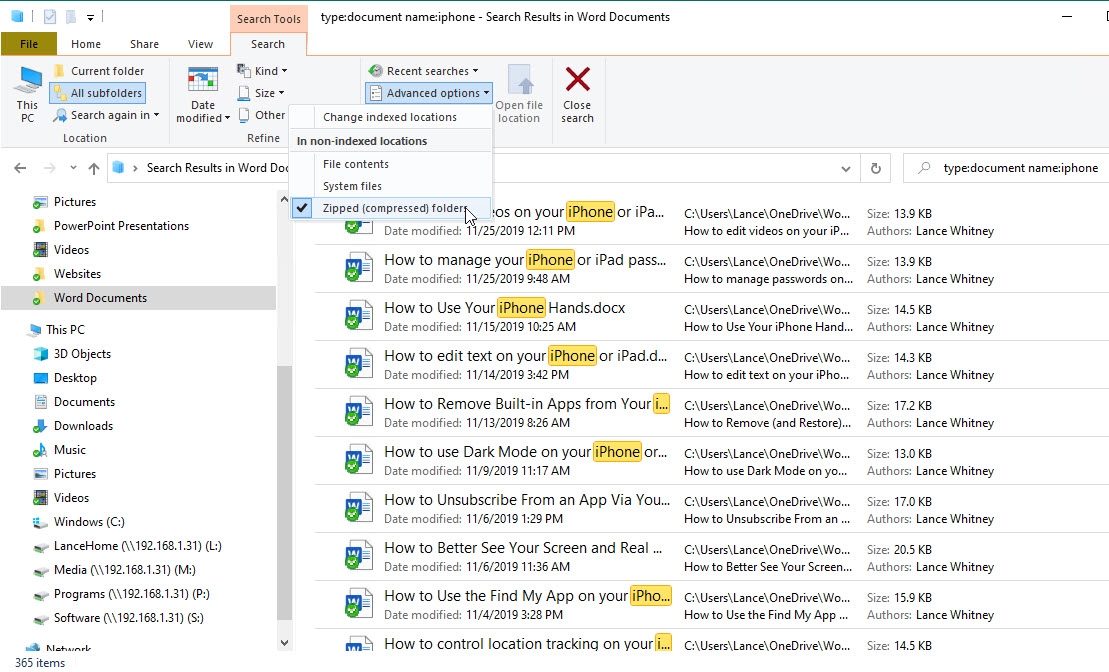
To save your current search criteria and options, click on the Search for Search. Write a name for search or leave the predetermined name. Keep the default location. Click Save.
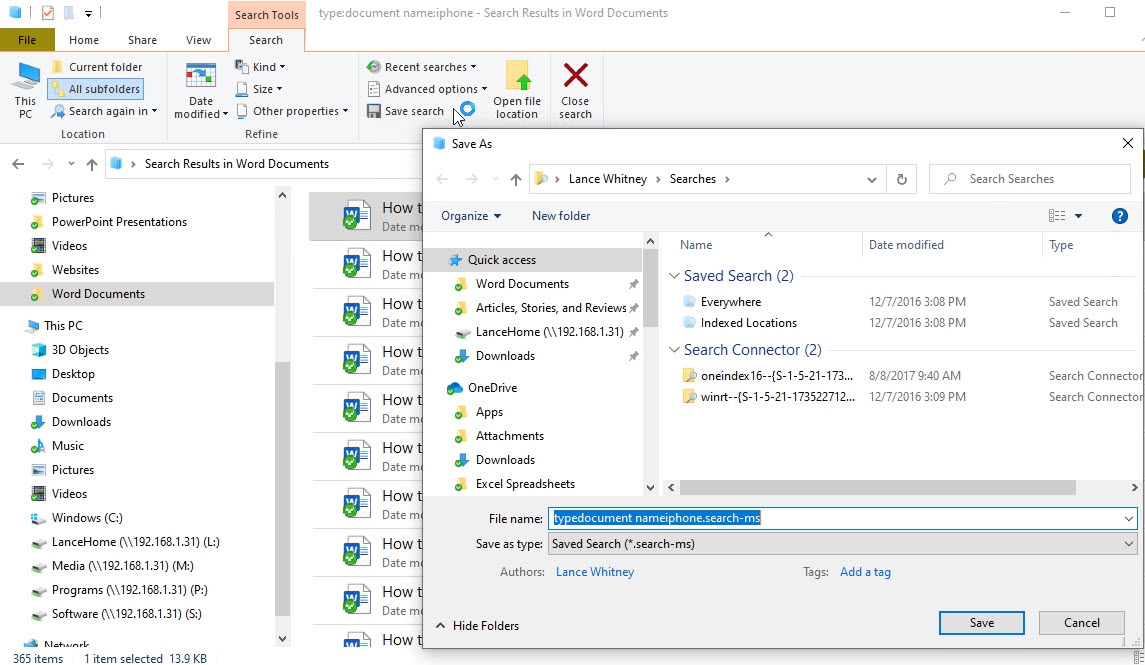
Finally, to open the complete folder of a specific file of the search results, click on the file and then click on the icon to open file location. When you finish with your search, click on the icon to close the search.
And for Windows 11?
The file explorer in Windows 11 comes with the same search tools described here, so you can follow a similar process to navigate. There are some aesthetic changes, such as labels added to the contextual menu (the one that appears when right click on a file or folder), icons for actions such as copying, paste and deleting, the option to assign colors to folders, tabs when opening several folders. At the same time, and the 'favorite' and 'recent files' sections.
Techrepublic has created a guide on how to search for applications, files and other elements in Windows 11. Note that Windows will stop admitting Windows 10 in October 2025.
In addition, in January 2025, Microsoft began trying the search promoted by AI on Windows 11 for Insider evaluators with a Copilot+PC. The function, which works in the file explorer and in other places, uses semantic indexation, which means that users can search for files using natural language. For example, you can search for photographs describing its content, even if the terms are not included in the name of the file. Will eventually be available for all Windows 11 users.
Fiona Jackson updated this article in January 2025.












